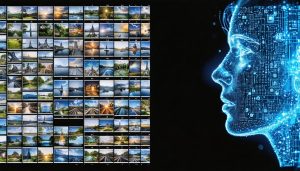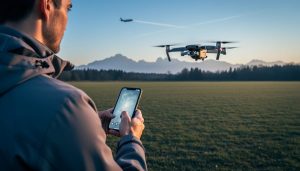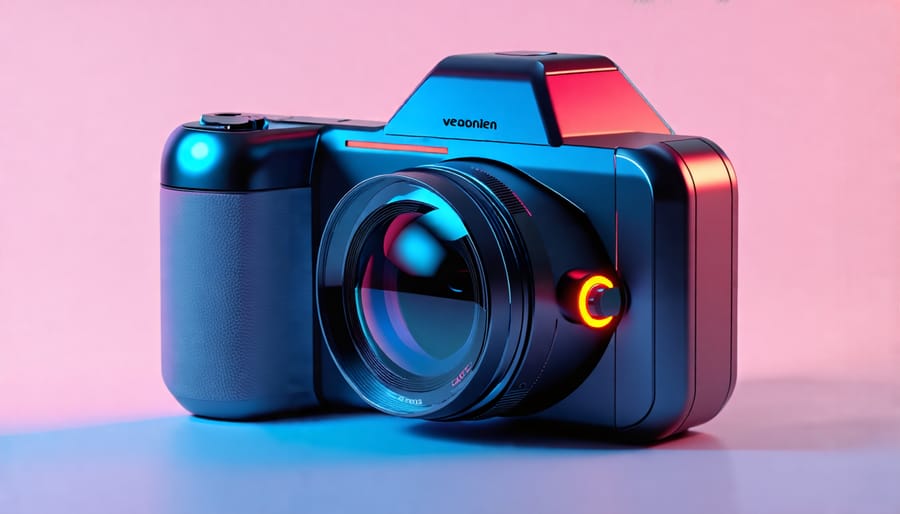
Brace yourself for a thrilling glimpse into the future of photography as cutting-edge advancements revolutionize the way we capture and share images. From AI-powered cameras that think for themselves to mind-bending computational photography, the boundaries of what’s possible are expanding at breakneck speed. Prepare to be amazed by ultra-high resolutions that reveal details invisible to the naked eye and cinematic video capabilities that blur the lines between stills and motion. As smart features automate technical tasks, creativity takes center stage, empowering photographers to focus on crafting compelling visual stories. Buckle up and join us on an exhilarating journey as we explore the jaw-dropping innovations that are redefining photography and shaping the cameras of tomorrow.
The Rise of Computational Photography
AI-Powered Image Processing
The future of photography is here, and it’s powered by artificial intelligence. Cutting-edge cameras now feature AI-powered image processing that optimizes your photos in real-time, ensuring you capture the perfect shot every time. Gone are the days of spending hours in post-processing to tweak exposure, color balance, and sharpness. These intelligent cameras analyze the scene and make split-second adjustments to deliver stunning results straight out of the camera.
Imagine pointing your lens at a breathtaking landscape, and the camera instantly recognizes the scene, adjusting the settings to bring out the vivid colors of the sunset and the intricate details of the foreground. Or, when shooting a portrait, the AI detects the subject’s face and eyes, ensuring tack-sharp focus and flattering exposure. This technology is a game-changer for photographers of all levels, from beginners who want great results without the learning curve to professionals who can now focus on creativity rather than technical settings.
As AI continues to evolve, we can expect even more impressive features in the future, such as advanced scene recognition, intelligent composition suggestions, and seamless integration with cloud-based editing platforms. The era of truly intelligent cameras is upon us, and it’s an exciting time to be a photographer.
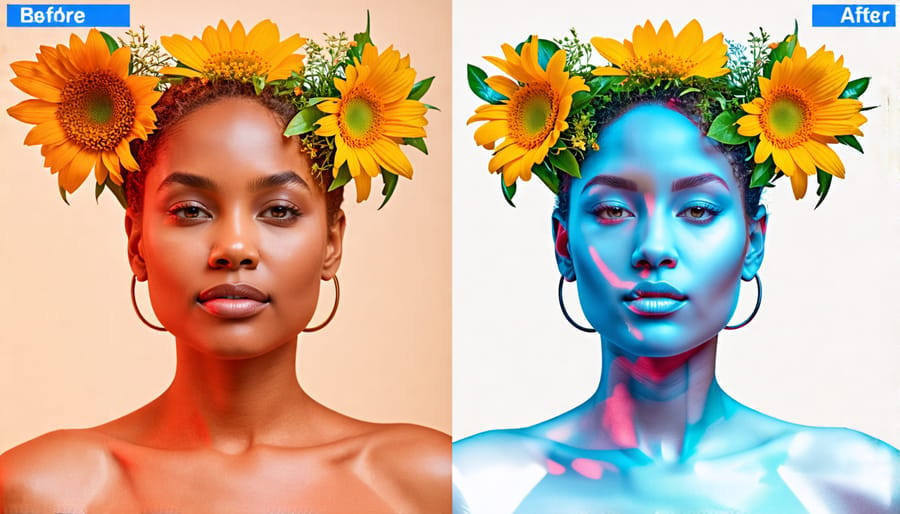
The Future of HDR and Low-Light Performance
High dynamic range (HDR) photography has come a long way in recent years, with advancements in computational photography pushing the boundaries of what’s possible in capturing a wide range of brightness levels in a single image. The future of HDR looks even more promising, as camera manufacturers and software developers continue to refine and improve their algorithms for combining multiple exposures into a single, well-balanced photo.
Low-light performance is another area where computational photography is making significant strides. Traditionally, shooting in dimly lit environments required high ISO settings, resulting in noisy, grainy images. However, the latest cameras are leveraging advanced noise reduction techniques and intelligent image stacking to achieve cleaner, more detailed results in challenging lighting conditions.
One exciting development on the horizon is the integration of artificial intelligence (AI) and machine learning into the HDR and low-light processing pipeline. By training AI models on vast datasets of images, cameras of the future will be able to automatically recognize and optimize for different scenes, adapting their HDR and low-light settings to produce the best possible results with minimal user intervention.
As these technologies continue to evolve, photographers can expect to see even more impressive HDR and low-light capabilities in the cameras of tomorrow, opening up new creative possibilities and allowing them to capture stunning images in a wider range of conditions than ever before.
Mirrorless Cameras: Smaller, Faster, Smarter
Mirrorless cameras have been making waves in the photography world, and for good reason. Unlike traditional DSLRs, mirrorless camera systems eliminate the complex mirror and prism mechanism, resulting in a more compact and lightweight design. This not only makes them easier to carry around, but also enables faster and quieter shooting.
One of the most significant advantages of mirrorless cameras is their advanced autofocus systems. Many models now feature on-sensor phase detection autofocus, which provides lightning-fast and incredibly accurate focusing, even in low light conditions. This makes them ideal for capturing fast-moving subjects, such as in sports or wildlife photography.
Another key benefit of mirrorless cameras is their ability to provide real-time preview of exposure and depth of field changes directly in the electronic viewfinder (EVF). This allows photographers to see exactly how their settings will affect the final image before taking the shot, reducing the need for trial and error.
Moreover, mirrorless cameras often boast superior video capabilities compared to their DSLR counterparts. Many models offer 4K video recording, slow-motion footage, and advanced features like focus peaking and zebra patterns, making them a popular choice among videographers and content creators.
As technology continues to advance, we can expect to see even more impressive features in future mirrorless cameras, such as improved battery life, faster continuous shooting speeds, and enhanced image stabilization. With their combination of portability, performance, and versatility, it’s no wonder that more and more photographers are making the switch to mirrorless systems.
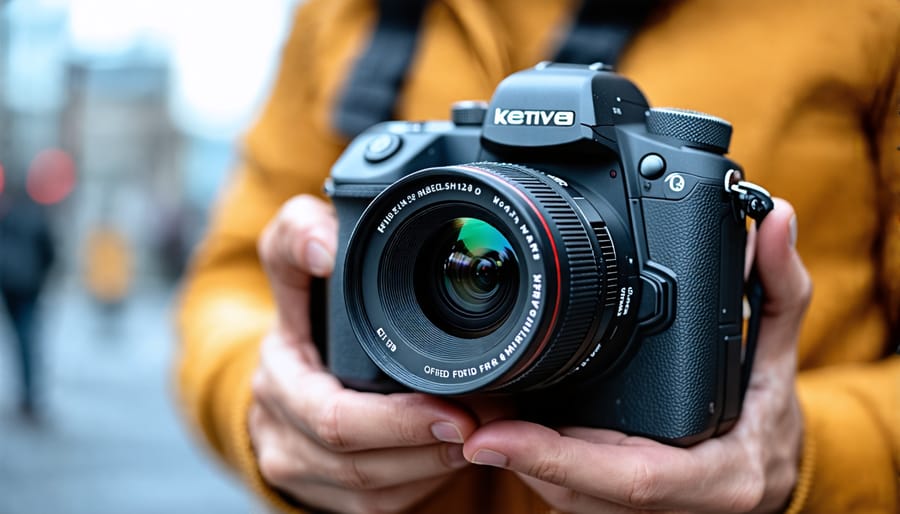
The Fusion of Video and Stills
The Rise of 8K Video in Consumer Cameras
The rise of 8K video in consumer cameras is a significant development that’s pushing the boundaries of what’s possible in photography and videography. With four times the resolution of 4K, 8K video offers unprecedented detail and clarity, allowing photographers to capture stunning footage that can be cropped, zoomed, and manipulated in post-production without sacrificing quality.
As more camera manufacturers introduce 8K-capable models, such as the Canon EOS R5 and the Sony a1, the technology is becoming increasingly accessible to enthusiasts and professionals alike. This shift is not only changing the way we capture video but also how we consume it, with 8K TVs and monitors slowly making their way into homes and studios.
However, shooting in 8K comes with its own set of challenges. The massive file sizes require high-capacity storage solutions and powerful computers for editing, which can be a significant investment. Additionally, the increased resolution demands better lenses and stabilization techniques to ensure sharp, blur-free footage.
Despite these hurdles, the rise of 8K video opens up new creative possibilities for photographers, allowing them to create immersive, high-quality content that stands out in an increasingly competitive market. As the technology continues to evolve and become more accessible, it’s clear that 8K video will play a significant role in shaping the future of photography and videography.
Seamless Switching Between Photo and Video Modes
In the fast-paced world of photography, the ability to quickly adapt to changing situations is crucial. Future cameras will seamlessly switch between high-resolution photo and professional video modes, allowing photographers and videographers to capture the perfect shot or footage without missing a beat. Gone are the days of fumbling with settings or carrying multiple devices – these cutting-edge cameras will intuitively understand the user’s intent and adjust accordingly.
Imagine you’re at a wedding, tasked with documenting the special day. As the bride walks down the aisle, you snap stunning stills that capture the emotion of the moment. Suddenly, the couple exchanges their vows, and you smoothly transition to video mode, recording the heartfelt words in crisp, cinematic quality. The camera’s intelligent algorithms optimize settings like focus, exposure, and stabilization in real-time, ensuring that every frame is perfect.
This seamless switching extends beyond just weddings – from sports events to nature photography, the versatility of these future cameras will empower creatives to tell more compelling stories. Journalists can report breaking news with both impactful images and engaging video interviews, while adventurers can document their travels in stunning detail without the hassle of juggling multiple devices. The possibilities are endless, and the future of photography looks brighter than ever.

Smartphones: The Everyday Camera of the Future
In recent years, smartphone cameras have made incredible strides, threatening to disrupt the dedicated camera market. With each new generation of smartphones, camera technology improves by leaps and bounds. Higher megapixel counts, larger sensors, and advanced computational photography algorithms are enabling smartphones to capture stunning images that rival those taken with traditional cameras.
One of the most significant advantages of smartphone cameras is their convenience. As the saying goes, the best camera is the one you have with you, and most people always have their smartphones on hand. This accessibility has led to an explosion in casual photography, with millions of photos being taken and shared every day.
Moreover, smartphone manufacturers are continuously pushing the boundaries of what’s possible with small, mobile-friendly camera modules. Many high-end smartphones now feature multiple lenses, allowing for wide-angle, telephoto, and even macro photography. Some devices also boast impressive zoom capabilities, thanks to periscope-style lenses and clever software processing.
Computational photography is another area where smartphones excel. By leveraging powerful processors and machine learning algorithms, smartphones can automatically optimize settings, reduce noise, and enhance details in ways that traditional cameras simply can’t match. Features like HDR, night mode, and portrait mode have become standard on most smartphones, enabling users to take professional-looking photos with minimal effort.
As smartphone cameras continue to improve, many photographers are finding fewer reasons to carry a dedicated camera. While there will always be a place for high-end mirrorless and DSLR cameras, particularly among professionals and serious enthusiasts, the gap between smartphones and traditional cameras is undeniably shrinking. As a result, camera manufacturers will need to innovate and differentiate their offerings to remain relevant in an increasingly mobile-centric world.
New Frontiers in Camera Technology
In the rapidly evolving world of camera technology, several cutting-edge advancements are poised to revolutionize the way we capture images. One such innovation is the development of liquid lenses, which replace traditional glass elements with a fluid that can change shape in response to electrical signals. This allows for lightning-fast autofocus, smooth zoom transitions, and the ability to correct optical aberrations on the fly. Liquid lenses also enable more compact camera designs, as they can perform the functions of multiple traditional lens elements.
Another exciting frontier is the implementation of global shutters in consumer cameras. Unlike the rolling shutters found in most current models, which expose the image sensor one row at a time, global shutters capture the entire frame simultaneously. This eliminates the distortion caused by fast-moving subjects or camera motion, resulting in sharper, more accurate images. Global shutters also open up new possibilities for high-speed photography and video, as they can achieve faster readout speeds and eliminate the “jello effect” often seen in footage from rolling shutter cameras.
Curved sensors are another promising development that could significantly improve image quality. By mimicking the curvature of the human eye, these sensors can more efficiently capture light from the edges and corners of the frame, reducing vignetting and improving sharpness. They also allow for simpler, more compact lens designs, as they don’t require the complex optical corrections needed to project an image onto a flat sensor. While curved sensors are still in the early stages of development, they have the potential to set new standards for image quality and low-light performance in the years to come.
As these technologies mature and make their way into mainstream cameras, photographers can look forward to faster, more responsive systems, improved image quality, and greater creative freedom. The future of photography is brighter than ever, with innovations that will empower both professionals and enthusiasts to push the boundaries of their craft.
As we’ve seen, the world of cameras and photography is evolving at a remarkable pace. From groundbreaking advancements in sensor technology and artificial intelligence to the rise of mirrorless systems and computational photography, the industry is undergoing a profound transformation. These innovations are not only pushing the boundaries of what’s possible with a camera but also making photography more accessible and intuitive for everyone, from seasoned professionals to enthusiastic beginners.
As cameras become smarter, faster, and more connected, photographers will have unprecedented creative freedom and control over their images. Features like real-time object recognition, advanced autofocus systems, and in-camera image processing will streamline workflows and allow photographers to focus more on their vision and less on technical constraints. Moreover, the increasing affordability of high-quality cameras means that more people than ever will have the opportunity to explore the art and craft of photography.
Looking ahead, the future of cameras and photography is undeniably bright. As technology continues to progress, we can expect to see even more impressive developments in the coming years, from cameras that can capture images in near-total darkness to AI-powered editing tools that can automatically enhance and optimize photos. At the same time, the timeless principles of composition, light, and storytelling will remain at the heart of photography, ensuring that the human element will always be essential to creating truly compelling images.
In conclusion, whether you’re a professional photographer, a passionate enthusiast, or simply someone who appreciates the power and beauty of images, there has never been a more exciting time to be involved in the world of cameras and photography. As we embrace the latest innovations and continue to push the boundaries of what’s possible, we can look forward to a future filled with stunning visuals, limitless creativity, and endless opportunities to capture the moments that matter most.




